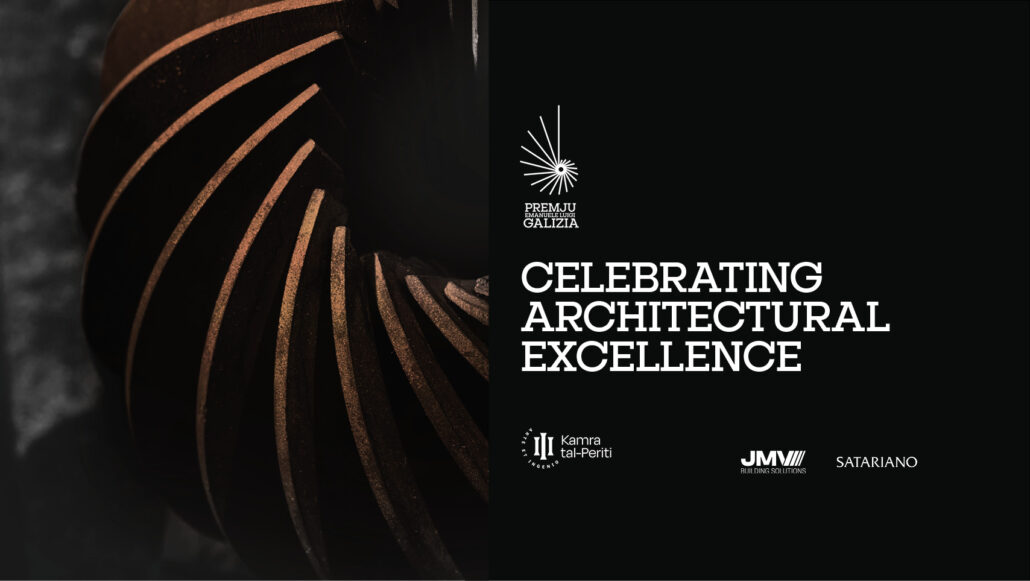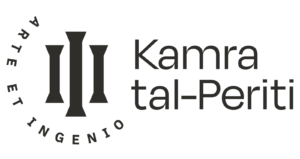PR 01/25 | KTP welcomes draft regulations to address regulatory discrimination in previous permit extensions
The Council of the Kamra tal-Periti welcomes the publication of draft regulations which at long last initiate the formal process to address the anomaly that had been created through L.N.263 of 2023. The Council had called for this error to be fixed within days from its publication, issuing a number of press releases on the matter[1],[2] and holding various meetings with various Ministers and the Planning Authority officials to bring this situation to an end, particularly in view of the grave risks it had posed to construction sites with ongoing works that were unfairly excluded from previous permit extensions.
With the eventual coming into force of this draft legal notice, the grave injustice, and frankly regulatory discrimination, suffered by over 8,700 permit holders has been finally made good.
The Kamra tal-Periti looks forward to initiating discussions with the Planning Authority on addressing several other regulatory and procedural issues causing unnecessary burdens on the average citizen, treating them with the same brush as major developers.
[1] https://kamratalperiti.org/pr-08-23-extension-of-validity-period-of-development-permits/
[2] https://kamratalperiti.org/pr-03-24-anomaly-of-unequal-validity-period-for-various-development-permits-prevails/
PR 13/24 | KTP welcomes increased investment in construction sector to raise quality
The Kamra tal-Periti notes with pleasure the increased budget allocation to the Building and Construction Authority and the Occupational Health and Safety Authority from €6.3 million to €7.5 million and €2 million to €2.7 million, respectively. This augurs well particularly as the rate of reform in these regulators continues to gather pace, and as the various recommendations in the Sofia public inquiry report are gradually implemented.
The Kamra tal-Periti is, however, particularly thrilled that its request for a budget allocation to fulfil its statutory functions as outlined in the Periti Act has finally been accepted. These statutory functions include:
- Conducting inquiries into any charge of professional misconduct or malpractice or abuse or failures made by or against any warrant holder in connection with the exercise of his profession or in connection with professional matters;
- Issuing Certificates to Practise to warrant holders who meet the minimum obligatory CPD requirements and mandatory professional indemnity insurance requirements;
- Issuing an official professional stamp and digital stamp to warrant holders;
- Organise the elections of the Periti Warranting Board;
- Regulate the profession by setting standards and codes of practice;
- Acting as an official consultant to the State on the formulation of public policy related to the built environment;
- Ensuring that all members of the profession act responsibly and ethically, having due regard for sustainable development practices, the protection of the national, cultural, social and environmental heritage, the upholding of public health and safety and structural integrity before, during and after construction processes, and the adherence to the Code of Professional Conduct, as may be prescribed by regulation.
The Kamra, which was set up in 1920, had been advocating for the allocation of a budget to fulfil its functions for decades. This is the first time that it shall receive a budget allocation amounting to €150,000 which it will dedicate to raising the quality of the services KTP and the profession provides to the public.
The Kamra tal-Periti vouches to make the best use of these public funds to uphold standards and the public good, and to ensure that we do indeed live in a country where high quality prevails.
PR 12/24 | KTP President calls on Government to engage competent professionals to head public entities
During Saturday’s national architecture awards ceremony, the Premju Emanuele Luigi Galizia, the President of the Kamra tal-Periti called on the Government to ensure that public entities are headed by competent professional to ensure that quality in public space is upheld.

These remarks came after a “four-day celebration of the profession” during which twenty different architectural firms and public entities presented their projects to an international jury in public presentations. The event, which was held under the Distinguished Patronage of the President of the Republic of Malta, reached its climax on Saturday evening when the winners of the various categories were announced.
Pizzuto spoke about the “magic and power of good architecture” and how the difficulties faced by architects in Malta are more accentuated than in other parts of the world due to the very high population density raising the theme of over-development as a primary concern of the general public. Many finalists of the Premju Galizia were indeed focused on overcoming and addressing the theme of overdevelopment, demonstrating that the profession “is not only sensitive to this theme, but has actively pursued solutions to address this problem”.

He called on the Government to take ownership of the degradation of public space and recognise the impact this is having on well-being.
He was particularly critical of “public relations schemes” announced by Infrastructure Malta, which like the “predictable debacle of Project Green’s green walls” before, will only result in a waste of more public funds that will leave no tangible community benefits in the long-term.
Pizzuto also called on the Government to take heed of the public’s strong desire for the implementation the Msida Park project it had proposed in June to avoid the public’s resentment for what could have been. “It is never too late to do what is right,” Pizzuto remarked.

Pizzuto concluded by stating he is, however, optimistic for the future of the profession and the industry, pointing to fruitful and frequent meetings with various Ministers and senior public officials over recent months which he believes will result in higher standards in the industry and the elimination of unnecessary bureaucracy.
The KTP president also looked forward to the evening’s budget in the hope that the various proposals the chamber had been made over recent months will place the profession on a sounder footing and begin to restore the reputation of the construction industry.
The Kamra tal-Periti also gave an award for Architecture Leadership to Paul Buttiġieġ, Mayor of Qala for his unrelenting efforts to safeguard Ħondoq ir-Rummien from unsustainable speculative development.

Perit David Felice was also awarded the Lifetime Achievement Award for the legacy his work has left on Malta’s built environment through the work he has done through his firm AP Valletta, his role as former president of the Kamra tal-Periti, as well as his chairmanship of V18.


The ultimate prize of the evening, awarded to the best overall project among the finalists – the President’s Award – was given to NIDUM for their project a City of a 1000 Gardens which envisions the transformation of Marsascala into a sustainable seaside village immersed in parks and gardens.

PREMJU GALIZIA WINNERS
Design Excellence Award
Bothouse by SON Architecture
Landscape Architecture Award
The Rehabilitation and Restoration of Wied Fulija Landfills by DTR
Innovation Special Commendation
Aircraft MRO Hangar Facility by EM Architects
Community Impact Award
Dar Tereża by Local Office for Architecture
Interior Architecture Award
Casa Ursula by Openworkstudio
Heritage Preservation Award
Casa Gourgion by MODEL Architects & CVC Architecture Studio
Architecture Vision Award
The Regenerative Multi-Modal Transport System by Mizzi Studio
AND
City of a 1000 Gardens by NIDUM
Architecture Vision Special Commendation for Sustainability
Help Malta Breathe by Periti Studio
AND
The Way We Live by Valentino Architects
Emerging Practice Award
SON Architecture
Architecture Leadership Award
Mayor Paul Buttiġieġ
Lifetime Achievement Award
Perit David Felice
Special Contribution to the Profession Award
Mr Tony Cassar
President’s Award (the highest award of the night)
City of a 1000 Gardens by NIDUM
PR 11/24 | Kamra tal-Periti a beacon for high standards – President Spiteri Debono
![KTP-Galizia-Presentations-004-[Quick]-comp](https://kamratalperiti.org/wp-content/uploads/KTP-Galizia-Presentations-004-Quick-comp-1030x686.jpg)
The President spoke about the impressive legacy Galizia has left on the country, with his work in the public and private sectors becoming landmarks of national importance, describing him as “a pioneer of the industry” and “the forefather of the modern perit”.
The impacts of industrial and technological development on the global environment posting threats to life and health, and to nature itself, was marked as a significant concern of the President. To this end, she emphasised the important of taking a holistic approach to development, to ensure that “people’s lives are not negatively affected” in particular mental health.
The President praised the Kamra tal-Periti’s efforts in maintaining discipline within the profession especially after recent tragic happenings. She also commended the Kamra for establishing the National Building Council with the Malta Development Association which she views as “a concrete way to instil the need for positive change in the mindset of those operating in the development industry”.
Her Excellency concluded her speech by stating that “[t]he Kamra tal-Periti has proved itself a guiding beacon in the development of high standards for the architectural profession, and these awards illustrate this in a very tangible way.” She concluded by thanking all the Premju Galizia finalists for their contribution to Maltese society.
![KTP-Galizia-Presentations-005-[Quick]-comp](https://kamratalperiti.org/wp-content/uploads/KTP-Galizia-Presentations-005-Quick-comp-1030x686.jpg)
KTP President Andre Pizzuto thanked the President of the Republic for the glowing review she has given the Kamra for the work it has been undertaking, and also for her incessant and generous support in promoting the Kamra’s positive agenda through the various branches of the State.
![KTP-Galizia-Presentations-007-[Quick]-comp](https://kamratalperiti.org/wp-content/uploads/KTP-Galizia-Presentations-007-Quick-comp-1030x686.jpg)
Public presentations of the finalists’ projects are being held every evening at the Valletta Local Council until Friday, with the winners being announced at the awards ceremony being held on Saturday evening at the Biblioteka Nazzjonali. Limited tickets are available to interested members of the public on the Kamra’s website.

PR 10/24 | Perit Dr Jeanette Muñoz Abela Elected Vice-President of ECCE
Perit Dr Jeanette Muñoz Abela has been elected Vice-President of the European Council of Civil Engineers (ECCE), bringing her extensive experience and leadership to this European institution. Dr Muñoz Abela, who currently serves as Chairperson of the Permanent Committee on Engineering within Kamra tal-Periti and has previously held the role of Vice-President of the Kamra, will continue to represent the voice of civil engineers at a European level, now as Vice-President.
Dr Muñoz Abela commented, “It is an honour to be elected as Vice-President of ECCE, an organisation that has consistently championed the civil engineering profession across Europe since 1985. As civil engineers, we are at a pivotal moment where our expertise in sustainable solutions and innovation is crucial in addressing challenges like the climate crisis and advancements in artificial intelligence.”
Her election not only underscores her individual contributions but also highlights Kamra tal-Periti’s ongoing role in shaping the profession both locally and internationally. The appointment brings valuable insights and influence to Malta’s civil engineering community, fostering stronger connections between national and European engineering bodies.
Dr Muñoz Abela will be collaborating with ECCE President, Platonas Stylianou, and the executive board to advance several initiatives, including a common training framework for easier mobility of engineers within Europe and the upcoming 2025 publication of the Civil Professional Book, which will outline the profession’s contributions across the continent.
ECCE is also focusing on digitisation within the construction industry, with a position paper addressing Building Information Modelling (BIM) and artificial intelligence in progress. As ECCE nears its 40th anniversary, it continues to work closely with universities and industry leaders to ensure the profession evolves in response to emerging challenges.
PR 09/24 | Kamra tal-Periti calls for Freedom Square to be handed back to the public on World Architecture Day
The theme of this year’s World Architecture Day, celebrated every first Monday of October across the world, is “Empowering the next generation to participate in urban design”.
It is a day on which the Kamra tal-Periti calls on all citizens, and in particular policy makers, to reflect on the state of architecture on our islands.
The Kamra has always been vociferous about the importance of promoting high quality architecture to ensure a better quality of life for all. It most recently gave a concrete example of how to achieve such an aim, by publishing a proposal for an urban park in the heart of Msida to visually demonstrate to the public that this is indeed possible, and to challenge public authorities on outdated vision for our islands.
However, if there is one intervention in Malta’s public space that symbolically embodies the disregard, verging on contempt, with which architecture and the work of architects is generally held, it is the blight around Freedom Square upon which the parliament building designed by Renzo Piano stands.
The fact that such ignominy is carried out at the behest of the highest democratic institution in the country, just underscores the dire state of architecture and the long road towards achieving the cultural sensibilities and basic educational standards necessary to truly begin to understand and address the issues surrounding quality of public space and general wellbeing.
Renzo Piano’s Parliament Building and the surrounding urban space were designed to promote transparency of the democratic processes. The permanently installed barriers that are erected around this building completely reverse the design intent of the architect, and instead places a physical separation between the electors and the elected, a gap which the design sought to eradicate.
The irony of this situation is further compounded by the fact that the institution that is entrusted by the Constitution to enact the laws of the land, is brazenly breaching several provisions of the same laws its members have passed inside that very building.
We call upon all the responsible public institutions, starting of course from the Speaker of the House, but also the Planning Authority, Lands Authority, and Grand Harbour Regeneration Corporation, among many others, to uphold their obligations in the law and return Freedom Square to the public to whom they ultimately should hold their allegiance.
PR 08/24 | Kamra tal-Periti calls on Mosta Local Council to make pedestrianisation work rather than reverse it
With reference to media reports stating that the Mayor of Mosta presented a motion to reverse the pedestrianisation of the core of Mosta, the Kamra tal-Periti calls on the Councillors not to succumb to commercial pressures that disregard community wellbeing.
Rather, the Kamra tal-Periti calls on the Mosta Local Council to implement measures to ensure the success of the pedestrianisation project. It is inevitable that such a major change to the urban fabric of Mosta will bring about a transition period through which local businesses will need to adjust, as the type and behaviours of their patrons inevitably change. This should not, however, deter the Mosta community from seeing through this transitory phase, in part by also supporting their local businesses with their custom.
If, as reported, activity during the periods when the square is fully pedestrian is low causing a temporary business downturn, it is incumbent on local and national political leaders to intervene by incentivising greater social and commercial activity in the square. Indeed, the Local Council should partner with central government to develop cultural and fiscal incentives during this transition period.
The Council of the Kamra tal-Periti is willing to support and discuss with the Mosta Local Council initiatives and incentives that can be developed, in consultation with Studjurban and local civic groups, to meet the needs of the various community interests.
PR 07/24 | Minister Owen Bonnici visits Palestinian Student Workshop organised by Kamra tal-Periti
Zejtun, Malta – On Tuesday, 23 July, Kamra tal-Periti’s President, Perit Andre Pizzuto, welcomed Hon. Owen Bonnici, Minister for National Heritage, the Arts, and Local Government, at the Parish Hall in Zejtun, where he had the opportunity to engage with the students from Birzeit University. This visit allowed him to observe the students’ interaction with the local community and their application of insights to the redesign of Misrah Santa Marija. The ambassador of Palestine for Malta, H.E. Fadi Hanania, was also present, reinforcing the atmosphere of collaboration.
This workshop, part of the Palestinian Student Initiative of Kamra tal-Periti in cooperation with the Architects Association in Palestine, forms a crucial part of the ongoing collaboration within UMAR (Union of Mediterranean Architects) to foster architectural innovation and cross-cultural exchange across the Mediterranean.
For more information, please contact:
Joeaby Vassallo
+356 99 202 406
jvassallo@kamratalperiti.org
PR 06/24 | Team of Periti behind KTP’s proposal meet IM to explain Msida Park project
Following a meeting held yesterday between the President of the Kamra tal-Periti (KTP) André Pizzuto and Minister for Transport, Infrastructure and Capital Projects Chris Bonett, another meeting was held this afternoon between members of the design team behind KTP’s Msida Park project and IM’s civil engineers. The purpose of the meeting was to explain the urban design and planning concepts behind the project to facilitate its development and implementation.
The parties are to reconvene at a future date to provide IM with the time necessary for the technical development of the new project. The KTP team committed to remain available to assist with its technical expertise as needed.
For more information on Msida Park visit kamratalperiti.org/msidapark
Affiliations
The Kamra tal-Periti is affiliated with the Architects' Council of Europe (ACE), European Council of Civil Engineers (ECCE), Union International des Architects (UIA), Union of Mediterranean Architects (UMAR), Commonwealth Architects Association (CAA), and the Malta Federation of Professional Associations (MFPA).
Contact Us
Kamra tal-Periti
The Professional Centre
127, Sliema Road
Gzira GZR 1633
Malta
+356 2131 4265
info@kamratalperiti.org
Office Opening Hours
Mon-Fri: 8:00am - 11:00am







